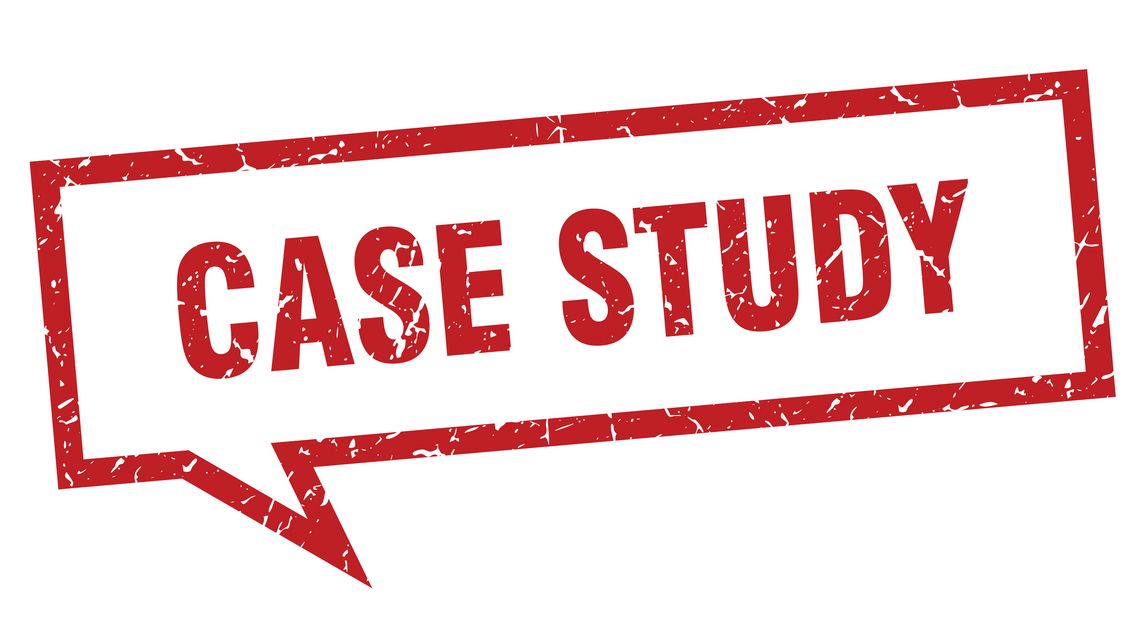
How to Use Case Studies to Improve Your Cross-Cultural Work
When we do intercultural training at C3 Consulting, it’s crucial for us that the participants bring their new knowledge into play in everyday life.
And working with case studies is a useful tool here.
Maybe you need to solve a challenge or a conflict where cultural differences are involved.
You might also want to improve the flow of information in your global team. Or prepare as best you can for important meetings with global stakeholders. Or create a common cultural platform in connection with a merger.
The above are just some examples. Because you can use case studies to achieve exactly what you want in your cross-cultural or global work.
Read on and you'll get:
- a step-to-step guide on how to write a case study;
- an example of how a Spanish manager employed at a Danish company used a case study to build cultural bridges;
- links to a lot of tools and techniques that you can use to analyze your own situation; and
- a case study template that you can download – so you can start making the changes you want right away.
Guide: How to write a case study
Think of your case study as a brief description of a situation where you want to make a change.
We recommend that you write down your case study.
In this way, you put a bit of distance between you and the situation, so you’ll find it easier to see new perspectives and discover your own blind spots. This is particularly important if there are misunderstandings or conflicts where you might be annoyed, frustrated or angry.
You shouldn’t spend more than 5-10 minutes writing your case study.
So, how do you go about writing a case study? What should you include? What should you leave out?
We recommend using ‘natural language’ – as if you’re telling another person. And adopt the so-called ‘helicopter view’, where you zoom in and out to try and focus on human interactions, i.e. communication and collaboration between people.
The case study must contain notes on important cultural factors such as:
- Who was present? Where do they come from? (Rank, age, gender, title, nationality, headquarter/local office, etc.)
- How do they relate to each other? (Relationship/trust.)
- Where did the interaction take place? (Online meeting, face-to-face at customer premises, training at the headquarter office, visiting a supplier.)
- Big group or small group? Formal or informal context?
- Who said what to whom?
- What did you expect was going to happen? What happened instead? (Identify the problem.)
- How did you feel during the situation? How would you prefer to feel instead?
A case study shouldn’t contain: real names or characteristics of the people concerned; technical details that are irrelevant, e.g. components or detailed specifications; or a complex description of the background to the situation.
In other words, don’t get bogged down by details or make the case study too personal. It’s important to work with generic challenges to make it easier to spot the parameters influencing the situation.
Once you’ve written your case study, analyze it and plan what your next steps will be in terms of creating the changes you want. You can read about how to do this at the bottom of this blog post.
But first of all, here’s a concrete example of how a Spanish manager employed at a Danish company used a case study to build cultural bridges.
Case study example: Building cultural bridges in a global team
Case:
I’m a Spanish manager working in a Danish company with an international (mainly Danish) team. I’ve been working here for five years and have slowly gotten used to the Danish management style and way of working.
The flat hierarchy is very different from my work experience in Spain. But I’ve adapted and made sure that I’ve included the team in decision-making, although I sometimes feel the employees are a little bit disrespectful in their open and direct feedback to me.
My problem now is that the team is growing and two employees from Spain have just joined the team. They have very little experience of working in Scandinavia, and I can see that they don’t understand the meeting style, decision-making process or the low rank between me and the Danish team members, who interrupt and disagree with me in meetings. What can I do?
What’s your desired outcome?
I’d like us to know more about each other’s cultures and respect that we come from different backgrounds. And I’d like us to adapt how we work with each other.
What’s going on? What’s the problem?
I’m a bit afraid that the two new Spanish colleagues will misunderstand my authority due to the behaviour of the Danish colleagues in meetings and the difference in understanding of rank.
What models, techniques, or alternative perspectives can you use?
Using the Double Iceberg, I can see the Spanish point of view and how the behaviour of our Danish colleagues would be interpreted. Jumping over to the Danish side, I can see what’s normal and typical for them, therefore identifying their potential blind spots.
The 4R Models for Spain and Denmark highlight that we have different perspectives on rank, how we speak up, and how we make decisions.
For example, in Spain we would normally use informal one-to-one sessions to clarify decisions or even make them before meetings are held, whereas in Denmark, decisions are co-produced during meetings. They might not be firm decisions, but the direction would be set.
What small steps can you take? What’s your plan?
I showed the Double Iceberg and the 4R Models to the Spanish colleagues, so they have a fair comparison of the different cultures.
I also sat down with the Danish team members to explain that things are done a little bit differently in Spain compared to Denmark. I asked for their input on how we could create a slow integration of the Spanish colleagues into the team, so we all know where we’re headed and how we’re going to work together.
I also introduced some fun teambuilding activities so we can get a chance to know more about each other and our backgrounds.
Do it now: Write a case, analyze it using the C3 models and techniques and plan your next step
So now it’s over to you!
Choose a situation at work where culture is involved and where you want to create change.
Spend 5-10 minutes writing your case study. Remember not to get bogged down by details – only include information that is crucial in clarifying the situation.
Then go ahead and analyze the case study. Ask yourself questions like:
- What’s at stake?
- What new perspectives can I see now that there is some distance between me and the situation?
- What does the situation look like to the other parties involved?
- Do I have any blind spots? Have I overlooked anything important?
Consider discussing the case study with a colleague who can offer more perspectives.
Finally, plan what your next steps are in terms of creating the changes you want. We recommend that you start small so you’re sure to get it done: What’s the smallest thing you can do to create the change you want?
You can download a template here that you can use to write and analyze your case study.
And below you’ll find links to a C3 toolbox full of cultural models and techniques that you can use to analyze your case study and adjust your behaviour to reach your goals.
C3 models and techniques you can use to analyze your case
The Cultural Investigator
The Cultural Investigator has three attributes, which can help you in the analysis of your case study:
- Curious – asks a lot of questions
- Explorative – investigates the background
- Courageous – breaks out of their comfort zone
Read more about the Cultural Investigator here
The Double Iceberg
Use this model of two icebergs to decode the different cultural elements that might influence your own point of view and that of your counterpart. The behaviour is visible above the surface of the water, while the underlying reasons (the cultural drivers that influence our behaviour and how we communicate) are hidden below the surface of the water. Look at yourself and then at your cross-cultural counterpart from above and below.
The 4R Model
The 4R Model is a tool that’s designed to help you make a fair comparison between your own culture and that of your global counterpart. The four Rs are Rank, Responsibility, Risk and Relationship. After you’ve done a 4R cultural analysis of yourself and your global counterpart, you can decide whether the situation in your case study would benefit from any of the following actions:
- Navigate the Rank
- Clarify Responsibility
- Minimize Risk
- Build Relationships
Low-risk tools: Create psychological safety
Creating a low-risk, psychologically safe context is an important skill to have when working cross-culturally, particularly when you’re working with higher-risk thinkers. See if the situation in your case study could benefit from the risk being minimized through using one or more 'low-risk tools'.
Low- and high-context communication
We have deeply embedded behaviours and preferences when we communicate. We don’t all have the ability to decode implicit messages and it’s not always easy to tell the difference between someone being direct or just plain rude. If your case study deals with ‘crossed wires’ in communication, try to figure out where you and your colleagues land on the low/high-context scale and explore the influence of these communication preferences.
Understand the brain’s ground rules
If you have insight into the way the brain works, you’ll be a better leader for both yourself and others. You can use this knowledge to explore new perspectives, to regulate your emotions, and to create a brain-friendly framework for your global employees.
Bring in the humaneness in your virtual collaboration
If the situation in your case study involves collaboration in the virtual setting, see if you could benefit from focusing more on building strong relationships with your global counterparts.
Exercise: Silence, Smile, Respect
This exercise can enhance your awareness of how you and your global counterparts might interpret the same thing in very different ways.
Where to go from here
Want to know more about how you can use case studies to create change? We recommend our book ‘Global Perspectives’, where there’s a whole chapter about how to work with case studies. Read more about the book here.
Can we help you or your company boost your cross-cultural work? Read about our intercultural training programmes here – or contact us for a chat.
Want more inspiration for your cross-cultural work? Follow us on LinkedIn – and sign up for our newsletter using the form below.

